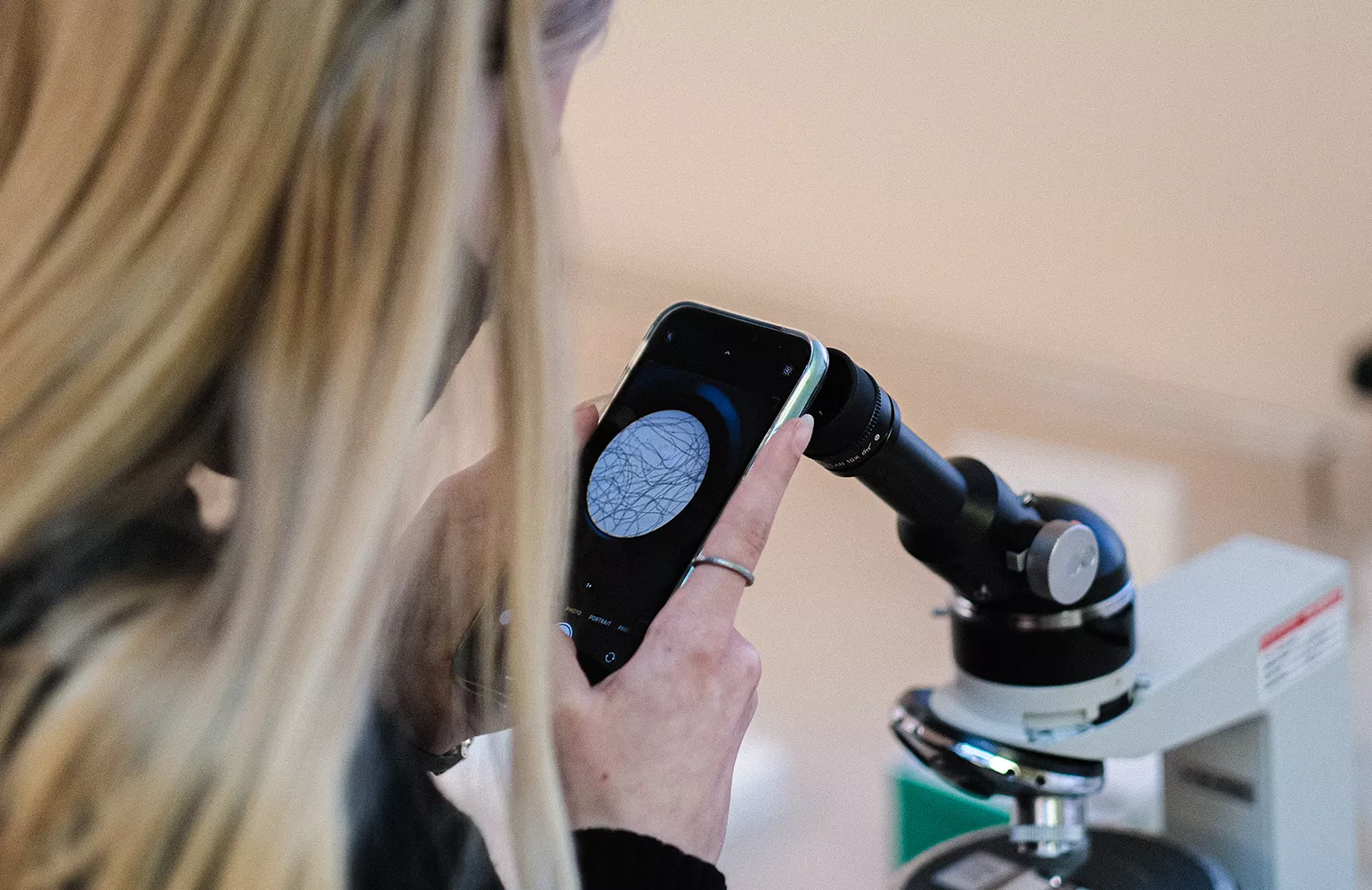
360°: Textiles in Context provides a multidisciplinary approach to the technical analysis, historical interpretation, and museum display of early Byzantine textiles.
The 360° is made up of two courses. The chemistry course Analysis of Art: Early Byzantine Textiles, co-taught by Marianne Weldon and Alicia Walker, introduces the science of textiles through hands-on training in the analysis of textile weaving techniques and materials. The history of art course Byzantine Textiles in Life, Death, and Afterlife, also taught by Walker, explores the manifold uses and meanings of textiles in early Byzantine culture. 360°: Textiles in Context is an inter-institutional collaboration with the Textile and Costume Collection at Thomas Jefferson University.
Several of the “hands-on” experiences of the class occurred earlier this month as students worked in two groups to engage in a number of activities. The groups alternated between a classroom in Canaday where they learned to card and spin wool with the help of guest lecturer Bettes Silver-Schack '75, an experienced craftsperson active in promoting the art of weaving, and a space in Old Library where they learned how to use Polarizing Light Microscopes to identify textile fibers.
360° is an interdisciplinary experience that creates an opportunity to participate in a cluster of multiple courses connecting students and faculty in a single semester (or in some cases across contiguous semesters) to focus on common problems, themes, and experiences for the purposes of research and scholarship.